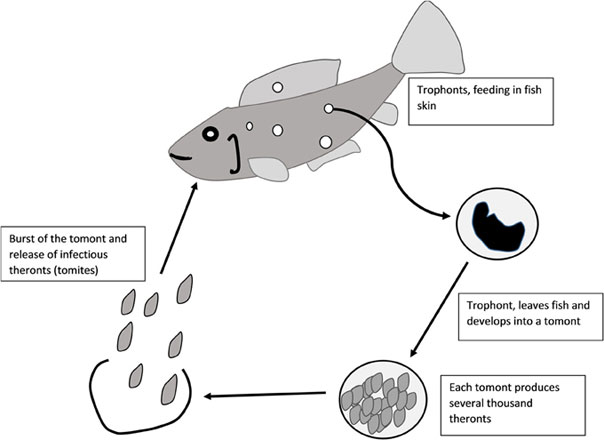- Your cart is empty
- Continue Shopping
White Spot Disease in Fish

Introduction:
Welcome to our comprehensive guide on White Spot Disease, a common problem in fish farms and aquariums worldwide. In this guide, we'll explore everything you need to know about white spot disease - what it is, its symptoms, how to diagnose it, and the best treatment options available. Whether you're a fish farmer or an aquarium hobbyist, this guide will help you to identify and treat white spot disease in your fish effectively.
What is White Spot Disease?
White Spot Disease, also known as Ichthyophthiriasis, is a parasitic disease that affects both freshwater and saltwater fish. It is caused by a protozoan parasite called Ichthyophthirius multifiliis, which attaches itself to the skin, gills, and fins of fish. The parasite feeds on the blood and body fluids of the fish, causing inflammation and tissue damage.
Symptoms of White Spot Disease:
The most common symptoms of White Spot Disease include white spots on the skin, fins, and gills of the fish. The spots may look like grains of salt or sugar and can be easily seen with the naked eye. Other symptoms may include rapid breathing, lethargy, loss of appetite, and rubbing against hard surfaces.
Diagnosing White Spot Disease:
If you suspect that your fish may have White Spot Disease, it's important to diagnose it early. One of the best ways to diagnose the disease is to observe the fish closely for any signs of the symptoms mentioned above. You can also use a microscope to check for the presence of the parasite on the skin, fins, and gills of the fish.
Treatment Options for White Spot Disease:
There are several treatment options available for White Spot Disease, including chemical treatments, herbal remedies, and natural remedies. Some chemical treatments include malachite green, formalin, and copper sulfate. Herbal remedies may include garlic, cinnamon, and oregano oil. Natural remedies may include raising the temperature of the water, adding salt to the water, and improving the overall water quality.
Preventing White Spot Disease:
Preventing White Spot Disease is much easier than treating it. Some of the best ways to prevent the disease from occurring in the first place include maintaining good water quality, avoiding overcrowding, and ensuring that your fish have a healthy and balanced diet. It's also important to quarantine new fish for at least two weeks before adding them to your existing aquarium or fish farm.
Conclusion:
In conclusion, White Spot Disease is a parasitic disease that affects both freshwater and saltwater fish. It can be easily identified by the white spots on the skin, fins, and gills of the fish. Early diagnosis and treatment are crucial in preventing the spread of the disease. By following the prevention tips mentioned above, you can ensure that your fish remain healthy and disease-free. If you suspect that your fish may have White Spot Disease, it's important to take action immediately to ensure that the disease doesn't spread to other fish in your tank or farm.
Diagram:
mermaidCopy codegraph TD
A[White Spot Disease]
B[Protozoan parasite]
C[Feeds on blood and body fluids of fish]
D[Causes inflammation and tissue damage]
A --> B
B --> C
C --> D
We hope this guide has been helpful in understanding White Spot Disease and how to prevent and treat it effectively. If you have any further questions or concerns, please don't hesitate to contact us. Thank you for choosing us as your go-to source for fish health information.

